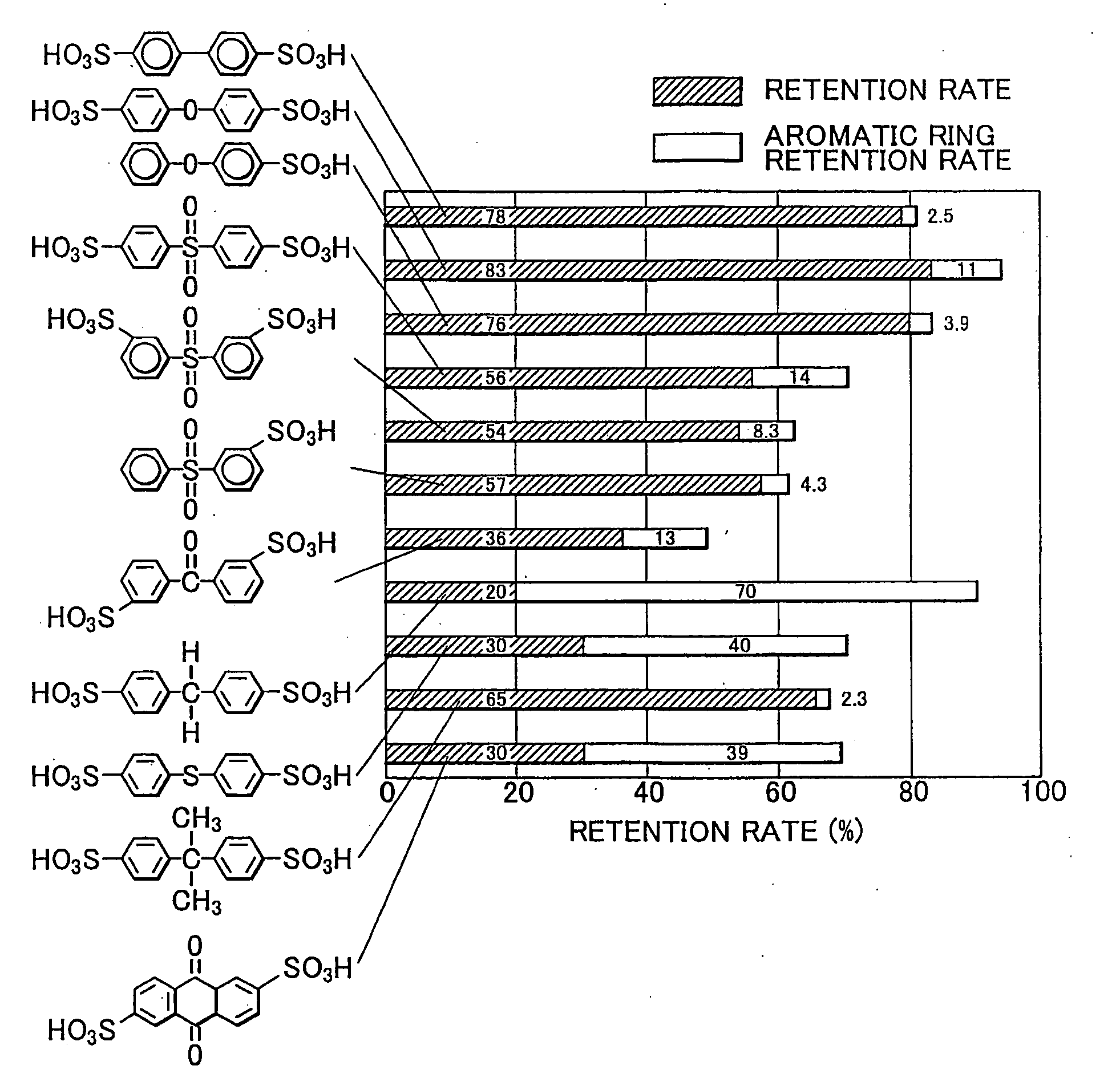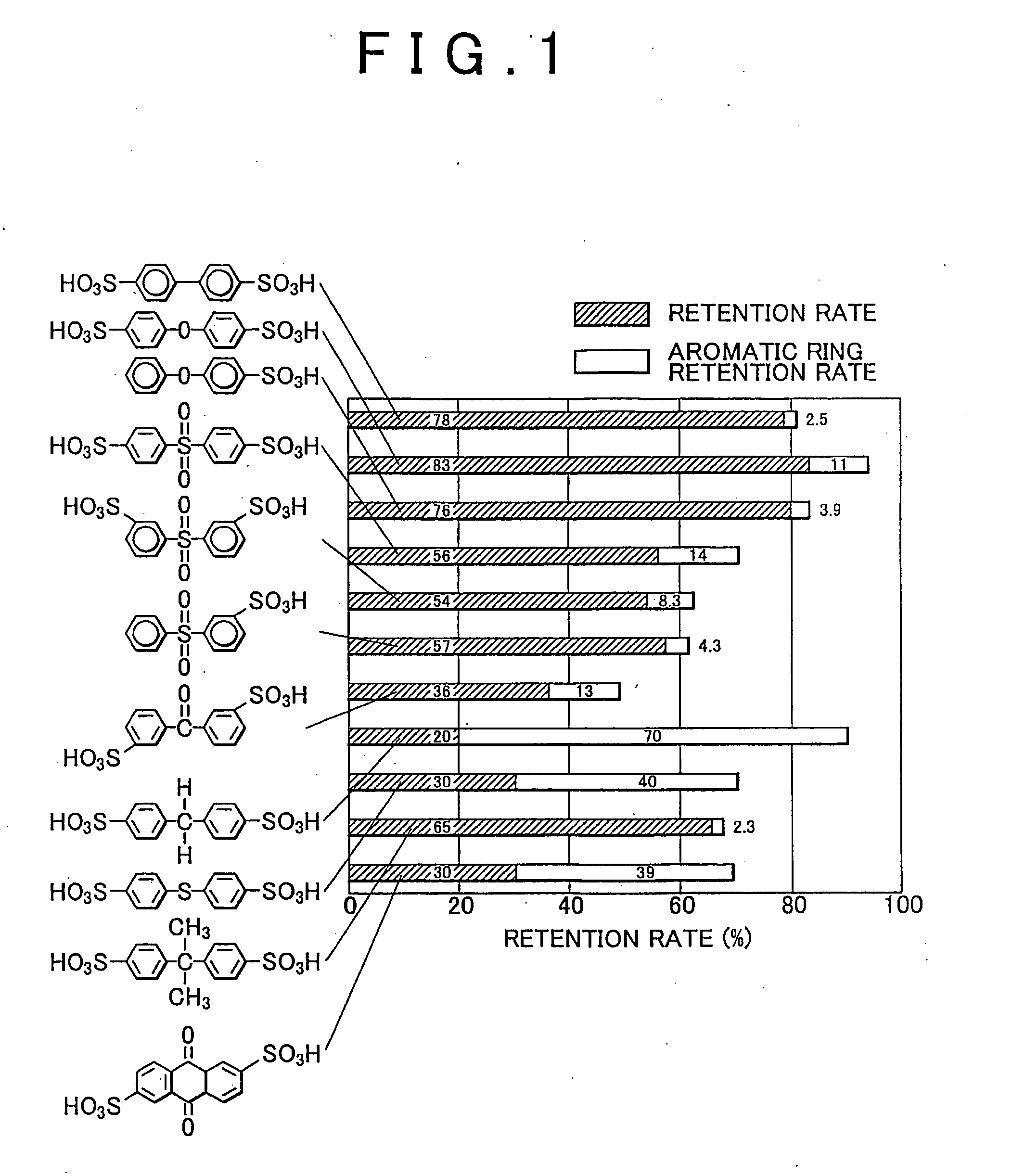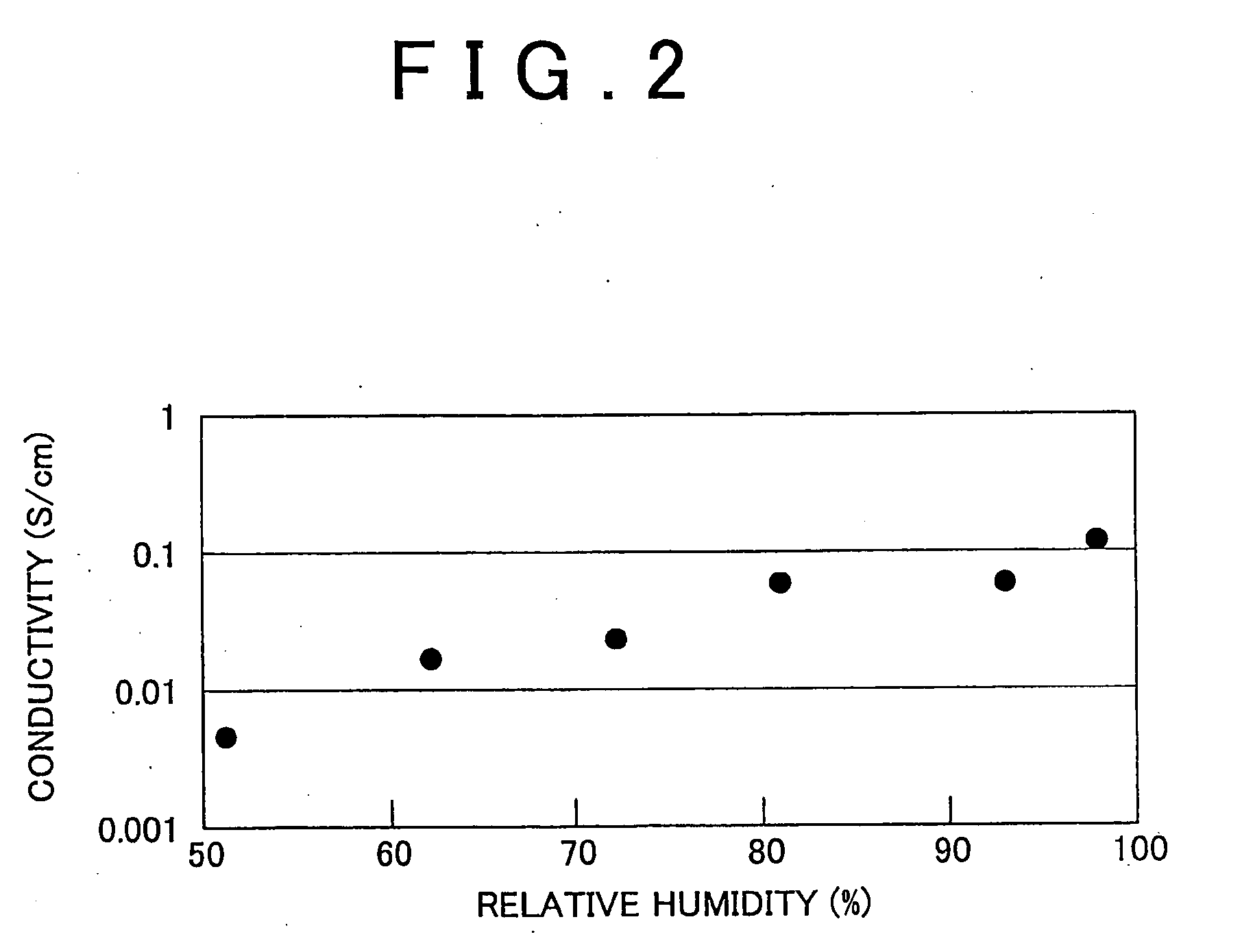Polyparaphenylene Hydrocarbon Electrolyte, Manufacture Method Therefor, and Polyparaphenylene as well as Electrolyte Membrane, Catalyst Layer and Solid Polymer Fuel Cell
- Summary
- Abstract
- Description
- Claims
- Application Information
AI Technical Summary
Benefits of technology
Problems solved by technology
Method used
Image
Examples
synthesis example 1
1. Synthesis Example 1
—SO3R1-Containing Monomer
[0102]For example, a monomer B in which W1 is bromine, X is a direct bond, b is 1, Y3 is —SO3R1, and R1 is Na (e.g., sodium 2,5-dibromobiphenyl-4′-sulfonate) is obtained by using 2,5-dibromobiphenyl as a starting material, and reacting this with chlorosulfonic acid, and then reacting the reaction product with NaOH.
[0103]Furthermore, for example, a monomer B in which W1 is bromine, X is a direct bond, b is 1, Y3 is —SO3R1, and R1 is an alkyl group (e.g., an ester of 2,5-dibromobiphenyl-4′-sulfonic acid chloride and an alcohol (e.g., 1,3-diethoxy-2-propanol)) is obtained by reacting 2,5-dibromobiphenyl-4′-sulfonic acid chloride and an alcohol (e.g., 1,3-diethoxy-diethoxy-2-propanol).
[0104]Furthermore, for example, a monomer B in which W1 is bromine, X is a direct bond b is 1, Y3 is —SO3R1, and R1 is quaternary ammonium (e.g., benzyltrimethylammonium 2,5-dibromobiphenyl-4′-sulfonate) is obtained by reacting 2,5-dibromobiphenyl-4′-sulfonic ...
synthesis example 2
2. Synthesis Example 2
—COOR1-Containing Monomer
[0106]Monomers B in which Y3 is —COOR1 can be synthesized by methods as follows.
[0107]For example, a monomer B in which W1 is bromine, X is a direct bond, b is 1, and R1 is Na (e.g., sodium(4-(2,5-dibromophenyl)benzoate salt) is obtained by using 2,5-dibromoaniline as a starting material, and converting it into 2,5-dibromophenyldiazonium chloride, and reacting this with toluene in the presence of sodium acetate, and oxidizing this with a potassium permanganate aqueous solution, and then reacting this with a NaOH aqueous solution.
[0108]For example, a monomer B in which W1 is bromine, X is a direct bond, b is 1, and R1 is an alkyl(butyl) (e.g., butyl (4-(2,5-dibromophenyl)benzoate) is obtained by using 2,5-dibromoaniline as a starting material, and converting it into 2,5-dibromophenyl diazonium chloride, and reacting this with toluene in the presence of sodium acetate, and oxidizing this with a potassium permanganate aqueous solution, and...
synthesis example 3
3. Synthesis Example 3
—PO(OR1)2-Containing Monomer
[0114]Monomers B in which Y3 is —PO(OR1)2 can be synthesized by methods as follows.
[0115]For example, a monomer B in which W1 is bromine, X is a direct bond, b is 1, and R1 is Na (e.g., sodium (4-(2,5-dibromophenyl)benzenephosphonate salt) is obtained by using 2,5-dibromoaniline as a starting material, and converting this into 2,5-dibromophenyldiazonium chloride, and then reacting this with sodium benzenephosphonate salt in the presence of sodium acetate.
[0116]For example, a monomer B in which W1 is bromine, X is a direct bond, b is 1, and R1 is an alkyl (e.g. ethyl) (e.g., diethyl (4-(2,5-dibromophenyl)benzenephosphonate)) is obtained by using diethyl benzenephosphonate instead of sodium benzenesulfonate salt in the foregoing synthesis method.
[0117]For example, a monomer B in which W1 is bromine, X is a direct bond, b is 1, R1 is quaternary ammonium (e.g., benzyltrimethylammonium (4-(2,5-dibromophenyl)benzenephosphonate)) is obtaine...
PUM
| Property | Measurement | Unit |
|---|---|---|
| Fraction | aaaaa | aaaaa |
| Fraction | aaaaa | aaaaa |
| Equivalent per mass | aaaaa | aaaaa |
Abstract
Description
Claims
Application Information
 Login to View More
Login to View More - R&D
- Intellectual Property
- Life Sciences
- Materials
- Tech Scout
- Unparalleled Data Quality
- Higher Quality Content
- 60% Fewer Hallucinations
Browse by: Latest US Patents, China's latest patents, Technical Efficacy Thesaurus, Application Domain, Technology Topic, Popular Technical Reports.
© 2025 PatSnap. All rights reserved.Legal|Privacy policy|Modern Slavery Act Transparency Statement|Sitemap|About US| Contact US: help@patsnap.com



